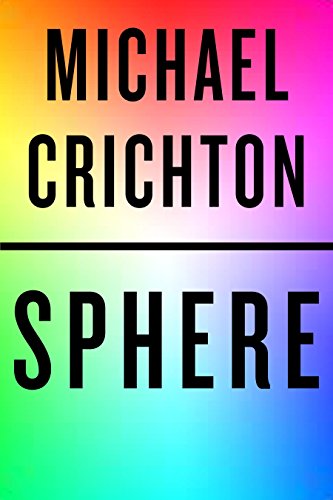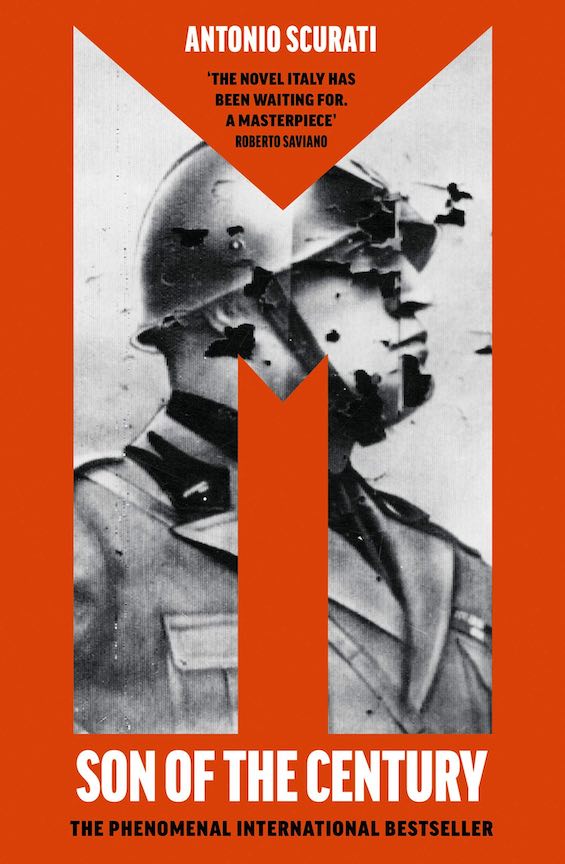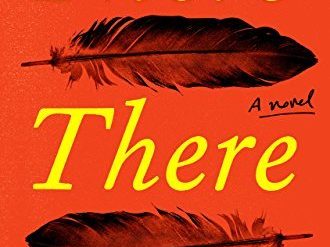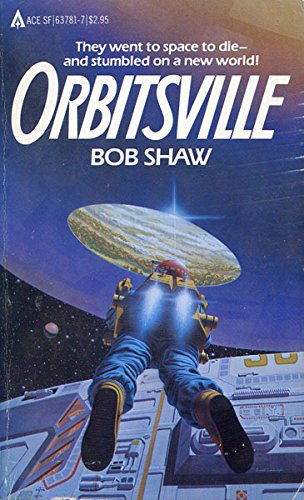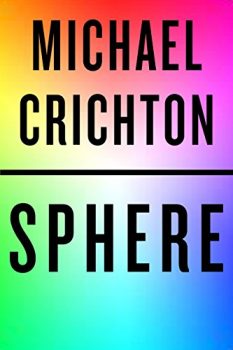
Estimated reading time: 4 minutes
When he died in 2008, Michael Crichton (1942-2008) left behind a literary legacy that had captured the imagination not just of the public but of Hollywood as well. Some of the best-remembered films of recent decades include stories based on Crichton’s twenty-six novels, including Jurassic Park and its sequels as well as The Andromeda Strain. And HBO’s successful recent production, Westworld, reprises a novel Crichton published in 1973. The six-foot-nine-inch Harvard-trained physician began writing novels when he was in medical school, and he took up fiction full-time immediately after graduating. Crichton never practiced medicine. But if his 1987 First Contact novel, Sphere, had been the best he could manage, perhaps he would’ve decided otherwise. The book is a literary exercise in human conflict that stretches the reader’s credulity.
Sphere by Michael Crichton (1987) 385 pages ★★★☆☆
Like most of his other work, Sphere is an example of what might be called “pop sci-fi.” Crichton populates the story with a small cast of characters confined to a small space and subjects them to a succession of stresses and threats designed to cause maximum conflict among them. And his narrator and protagonist, Norman Johnson, is a fifty-three-year-old professor of psychology ideally equipped to understand precisely the dynamics of their increasingly ugly conflicts.
A literary exercise in human conflict that’s awkwardly contrived
The principal characters include four scientists in addition to Norman as well as their team leader, Capt. Harold C. (“Hal”) Barnes, USN. The other four scientists on the ULF (Unknown Life Forms) team are all much younger than Norman, and it would be hard to put together a team more likely to fight among themselves.
- Beth Halpern, the team zoologist, is “Mother Nature with muscles,” a beautiful young thirty-something woman who works out with weights.
- Harry Adams is not yet thirty. He’s a Princeton mathematician, African-American, a child prodigy who is obviously smarter than everyone else by a large measure—and insists on rubbing it in.
- Ted Fielding, “compact, handsome, and still boyish at forty,” is an astrophysicist at the Jet Propulsion Laboratory.
- The marine biologist is Arthur Levine, “pudgy . . . pale and uneasy, wrapped in his own thoughts.”
- And Capt. Barnes, it turns out, is no longer in active service but appears to have left a senior position in the Pentagon to head the team. He is military to the core.
For the top-secret ULF Project, the Navy has dragooned the scientists and hustled them off to the South Pacific to investigate a “spaceship [that] crashed three hundred years ago” and now lies buried under growths of coral a thousand feet down on the bottom of the ocean. The project team, along with Navy divers and service personnel, descends to the bottom and takes up residence in undersea habitats adjacent to the crash site. And then the fun begins.
The eponymous “sphere” is a prop
It doesn’t take long for the team’s investigation of the mysterious spaceship to trigger conflicts among them. And it soon becomes clear that the game they’re playing is for keeps. The bodies start to drop, because (of course) no cast of characters emerges unscathed from a Michael Crichton story. The centerpiece of the tale is, naturally, the spaceship itself and what they discover inside it. Complications aplenty ensue. But the eponymous “sphere” they come across proves in the end to be a prop designed to exaggerate the psychological games the scientists prove they’re all so good at playing. Michael Crichton proves in this literary exercise in human conflict that people really have trouble getting along with one another. If First Contact ever goes like this, the human race is in very deep trouble.
For related reading
I’ve also reviewed Next by Michael Crichton—A fast-moving thriller about genetic engineering and The Andromeda Evolution by Michael Crichton and Daniel H. Wilson, published in 2019 (Michael Crichton comes back to life in a new techno-thriller). But it was Wilson who wrote the latter book.
For more good reading, check out:
- The ultimate guide to the all-time best science fiction novels
- Too 10 great sci-fi novels
- 10 new science fiction authors worth reading
- The top 10 dystopian novels
And you can always find my most popular reviews, and the most recent ones, on the Home Page.

